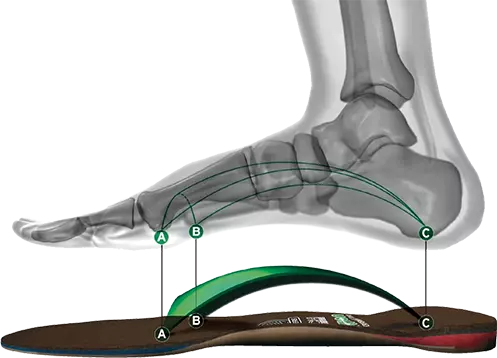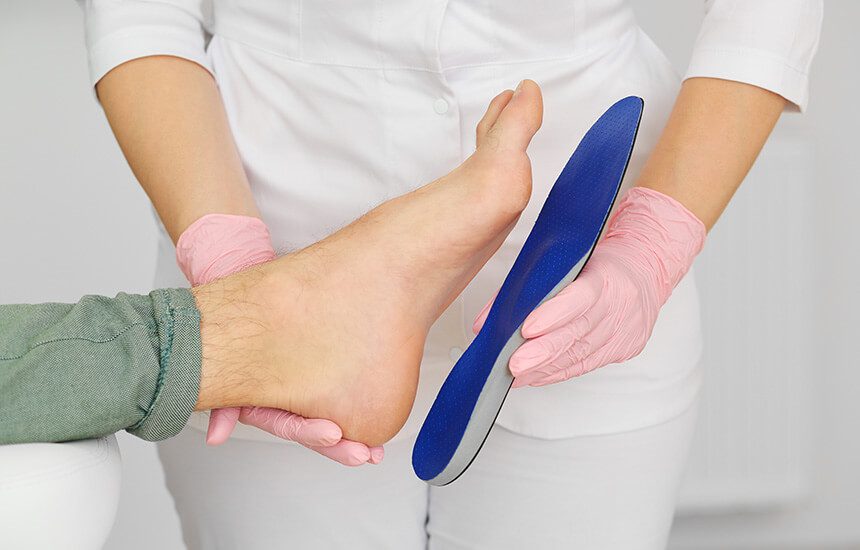Find a Fitter for Bootfitting Dacono CO
Online Boot Fitting Resources Louisville CO
Cold ft in ski boots is a common issue confronted by skiers, affecting their comfort and general performance on the slopes (The Importance of Proper Boot Fit Golden CO). Warmth is essential for an enjoyable snowboarding expertise, and cold feet can diminish the joys of gliding down a snow-covered mountain. Understanding the explanations behind chilly toes in ski boots and techniques to combat it could make a major distinction in your skiing adventures
Ski boots are designed to offer the support necessary for skiing however can also be a supply of discomfort. A tight fit, while essential for control, can restrict blood move, resulting in cold ft. This is especially true if the boots are too small or not correctly fitted. Ensuring that ski boots are the right measurement is step one in stopping chilly toes.
Ideal Conditions for Ski Boot Fitting Longmont CO
Another factor contributing to chilly feet in ski boots is moisture. When your feet sweat inside the boots, that moisture can result in a chilling impact because the temperature drops. Skiing usually includes high power expenditure, and the warmth generated inside the boots can shortly be misplaced as sweat accumulates. Using moisture-wicking socks or boot liners can significantly alleviate this downside.
Insulation in ski boots performs a crucial position in maintaining feet heat. Many boots come with various degrees of insulation, and the selection of fabric can influence how nicely they keep heat. Insulated boots are designed to keep warmth in, however choosing the best stage of insulation according to the local weather and particular person preferences is essential. Some skiers favor extra layers, whereas others could find thicker liners too constricting.

Choosing the proper socks is just as essential as selecting the right boots. Thick, cumbersome socks can impede circulation, resulting in chilly toes in ski boots. Opting for skinny, high-performance ski socks made from supplies designed to wick moisture can help maintain toes heat. Additionally, avoid cotton socks as they retain moisture and contribute to cooling down.
Another often-overlooked facet is how one attire for a ski outing. A complete layering system is significant. For ski trips, maintaining the whole body warm ensures that extremities, just like the ft, keep warm as properly. Investing in quality base layers, mid-layers, and outerwear may help optimize physique temperature and circulation.
Custom Boot Fittings Explained Thornton CO
Using foot warmers or heated insoles could be particularly effective for these prone to chilly feet. These gadgets present an additional heat supply and may be found in various types, from disposable chemical heaters to rechargeable battery-operated choices. They might help prolong comfort all through the day on the slopes.
Adjusting the way in which you fasten your boots can even make a big difference. Ski boots ought to be cosy but not overly tight. A too-tight fit can constrict blood circulate, resulting in cold toes. Learning how to correctly adjust the buckles might help achieve a cushty fit that balances heat and performance.
Take notice of how lengthy you spend standing nonetheless versus snowboarding. Cold feet are often exacerbated by inactivity. During breaks or while ready in lines, toes tend to chill down significantly. Making an effort to maintain shifting, even when waiting, might help keep heat.
Custom Footbeds for Improved Fit Lyons CO
Plan your breaks wisely. When taking a break, find a heat spot to relaxation. Stamping your feet or doing simple workout routines can hold your blood circulating and forestall chilly ft in ski boots. Remaining aware of your physique's temperature can guide well timed interventions to keep warmth locked in.
Remember that selecting the best ski resort and conditions also can have an effect on how chilly toes feel. Some places are known for their biting winds and decrease temperatures. More protected ski areas with sunnier situations can provide a better skiing experience. Thus, the choice of snowboarding location can indirectly influence how cold or heat your toes really feel throughout the day.
Finally, staying hydrated is crucial. When the physique is well-hydrated, circulation improves, which is essential for sustaining warmth. It’s straightforward to forget to drink water while involved in actions, especially in cold climate, but making a aware effort to stay hydrated can have vital advantages.

Addressing chilly feet in ski boots often includes trial and error, adapting gear and strategies to find the right solution for individual needs. Every skier is completely different, and what works for one person won't work for another. It’s essential to experiment with numerous socks, boot types, and layering strategies to search out the simplest combination for oneself.
Boot Mechanics in Ski Boot Fitting Firestone CO
Ultimately, enjoying snowboarding to the fullest requires attention to the little issues that impact comfort and performance. Understanding the causes of cold toes in ski boots and implementing strategies to prevent it may possibly transform a cold ski day into an exhilarating experience. By preserving feet heat, skiers can focus on soaking in the good thing about the mountains and the thrill of the experience.
Cold toes should not be a recurring challenge but rather an opportunity for skiers to refine their setup and techniques. Emphasizing warmth and comfort ensures a extra enjoyable day on the slopes, allowing for longer and more fulfilling runs. Each skier can take proactive steps to mitigate the chilliness, turning skiing right into a joyous winter journey rather than a battle against the chilly.
As the season unfolds, do not forget that snowboarding is about having fun with the mountains, the contemporary air, and the joy of gliding on snow. Keeping chilly feet at bay enhances every facet of the experience, allowing for a focus on technique and pleasure somewhat than discomfort.
Evaluating Different Boot Fits Lafayette CO
Finding joy in snowboarding is possible by addressing every thing from boot fit to sock choice, layering, and hydration. By prioritizing these parts, skiers can guarantee they have the right measures in place against chilly toes, permitting each journey down the slope to be as exhilarating as meant.
- Proper fit of ski boots is essential; too much room can result in chilly feet because of inadequate blood circulation.
- Insulating footbeds created from materials like gel or specialized foam can improve warmth by offering thermal protection.
- Toe heaters or heated insoles are effective accessories to combat cold toes, particularly in extraordinarily low temperatures.
- Keeping feet dry is important; moisture from sweat can result in important cooling, so moisture-wicking socks are really helpful.
- Choosing the right socks, typically created from merino wool or artificial blends, can significantly improve heat and comfort.
- Periodically taking breaks allows for foot motion and circulation, serving to to alleviate numbness and enhance heat.
- Ensure that ski boots aren't overly tightened, which may prohibit blood circulate and contribute to chilly sensations.
- Tuning the boot’s insulation stage based on weather conditions can hold toes hotter; contemplate fashions with adjustable features.
- Using ski boot heaters or foot warmers can present a constant supply of heat throughout lengthy outings on the slopes.
- Familiarizing oneself with layering strategies for ski gear also can help in preventing cold ft by sustaining total body warmth.undefinedWhat causes cold toes in ski boots?
Creative Solutions for Boot Fitting Problems Westminster CO
Cold feet in ski boots is typically caused by poor circulation, insufficient insulation, or moisture inside the boot. If your ft are cold, it may imply your boots are either too tight, not heat enough, or not fitted correctly.
How can I stop chilly ft while skiing?
To prevent cold ft, guarantee your ski boots fit properly with out being overly tight. Use moisture-wicking socks manufactured from wool or artificial supplies, and consider boot heaters or heated insoles for added warmth.
Ski Boot Fit Adjustments Tips Frederick CO
Are ski socks essential for maintaining my ft warm?
Yes, ski-specific socks are designed to offer warmth whereas allowing moisture to flee. They are typically thicker around key areas just like the toes and shin, enhancing insulation with out compromising comfort.
Is it okay to put on two pairs of socks in ski boots?
Wearing two pairs of socks can actually prohibit circulation, resulting in colder toes. It’s higher to determine on a single, well-fitted moisture-wicking sock designed for skiing.
Understanding Pressure Points in Ski Boots Niwot CO
What should I do if my ft get chilly whereas skiing? (Ski Boot Fit Adjustments Tips Louisville CO)
If your toes turn out to be cold, take a break to heat them up. Remove your boots for a couple of minutes, wiggle your toes, and consider including foot heaters or shifting to a warmer surroundings, if possible.
The Role of a Boot Fitter Louisville CO
Can boot liners assist with cold feet?
Yes, high-quality boot liners can significantly enhance insulation and heat. Consider custom or heat-moldable liners that conform to your foot, enhancing both comfort and thermal management.
How important is boot slot in preventing chilly feet?
A proper boot fit is crucial for preventing chilly feet. Boots should be snug however not overly tight, allowing for good circulation while maintaining heat contained. Poor fitting can result in pressure points, proscribing blood circulate.
Custom Ski Boots for Optimal Fit Dacono CO
Do the type of ski boots have an result on warmth?
Absolutely. Insulated or high-performance ski boots often provide better thermal protection. Research the specific features of boots, as some fashions prioritize heat together with performance.
Custom Boot Fitting Packages Available Loveland CO
Should I be concerned about moisture in my ski boots?
Yes, moisture can contribute to cold toes. Always dry your boots thoroughly after every use, and think about using waterproof boots or gaiters to maintain snow and moisture out whereas skiing.
What are some indicators that my ski boots are too tight?
Creative Solutions for Boot Fitting Problems Loveland CO
Signs that your ski boots are too tight include tingling or numbness in your toes, chilly feet, or noticeable discomfort when carrying them - The Fitting Process for Ski Boots Westminster CO. If you experience any of these, contemplate getting an expert fitting or adjusting the boot dimension
you can try this out great site